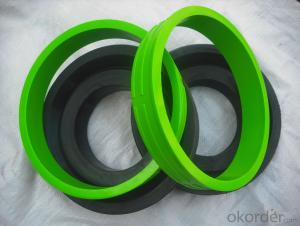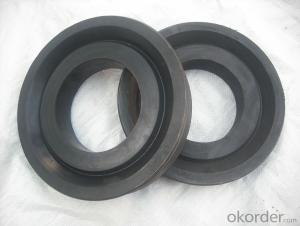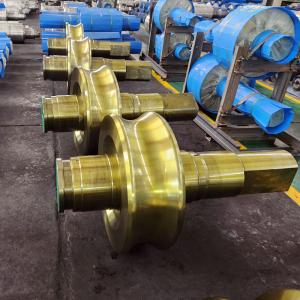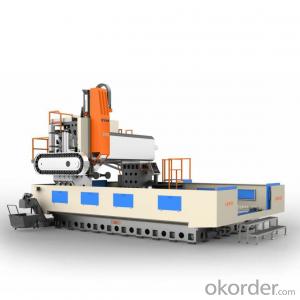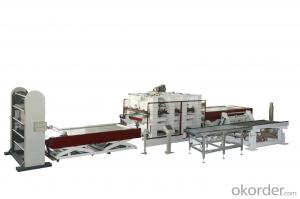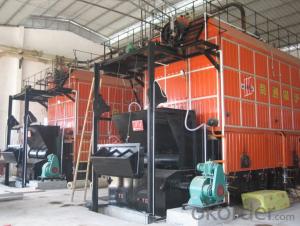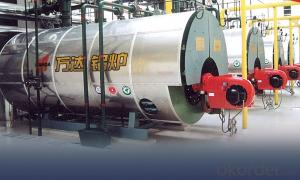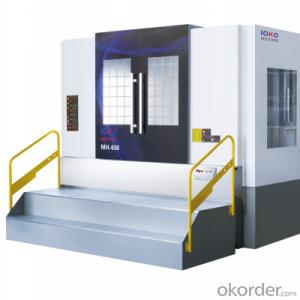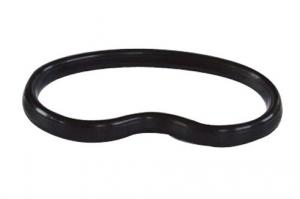ZOOMLION RUBBER PISTON WITH FIBER DN230 WITH HIGH QUALITY
- Loading Port:
- Tianjin
- Payment Terms:
- TT OR LC
- Min Order Qty:
- 3 set
- Supply Capability:
- 500 set/month
OKorder Service Pledge
OKorder Financial Service
You Might Also Like
ZOOMLION RUBBER PISTON WITH FIBER DN230
Schwing/ Sany/PM/Zoomlion concrete pump rubber piston
name | Concrete pump piston |
size | DN200 for Schwing DN230 for Schwing DN200 for PM entirety piston DN230 for PM entirety piston DN180 for Zoomlion piston DN200 for Zoomlion piston DN220 for Zoomlion piston DN230 for Zoomlion piston DN180 for Sany piston DN195 for Sany piston DN200 for Sany piston DN230 for Sany piston DN260 for Sany piston DN280 for Sany piston Other sizes and types upon request |
Material | PUR Polyurethane,natural rubber |
Applacation | Used in concrete pump truck,concrete pump,Hydrulic ram system in Construction work equipment
|
Serving brands of mounted truck concrete pump and concrete pump | Sany ,PM, Zoomlion,Schwing,CIFA and so on |
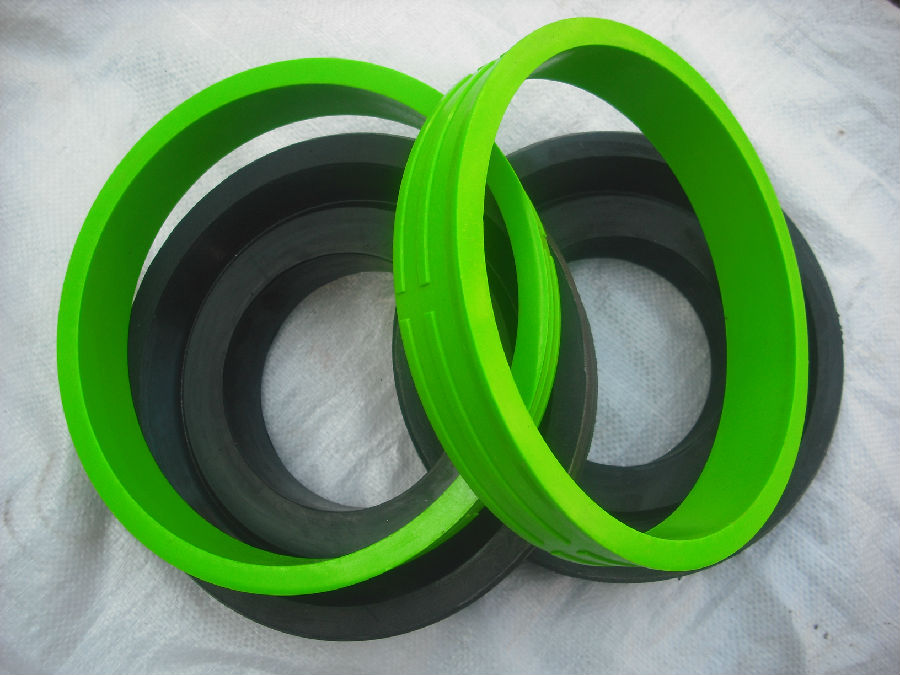
- Q:How often should concrete pump remote controls be inspected and maintained?
- Concrete pump remote controls should be inspected and maintained on a regular basis to ensure their proper functioning and to prevent any potential issues. The frequency of inspections and maintenance will depend on various factors such as the intensity of use, environmental conditions, and the specific recommendations provided by the manufacturer. As a general guideline, it is recommended to inspect and maintain concrete pump remote controls at least once every three months. This includes checking for any visible damage, loose or worn-out parts, and ensuring that all buttons and switches are working properly. Additionally, it is important to inspect and clean the battery compartment, and replace batteries if necessary. However, in high-demand situations or extreme environmental conditions, more frequent inspections and maintenance may be required. For instance, if the concrete pump is used in a harsh environment with excessive dust or moisture, it may be necessary to increase the frequency of inspections and cleanings to prevent any potential damage or malfunction. It is also crucial to follow the manufacturer's guidelines and recommendations for maintenance. They may provide specific instructions on lubrication, calibration, or other maintenance procedures that should be performed at regular intervals. By adhering to these guidelines, concrete pump remote controls can be kept in optimal condition, ensuring safe and efficient operation.
- Q:How to choose concrete pump?
- The actual export pressure of concrete pump and the actual product per hour, the greater the value, the greater the capacity index, the power of the motor will be greater, thus achieving the purpose of large displacement, high lift
- Q:Can I get spare parts for concrete pump accessories like remote control systems?
- Certainly, spare parts for concrete pump accessories like remote control systems can be obtained. A variety of spare parts for these products are offered by numerous manufacturers and suppliers of concrete pump accessories. These spare parts encompass various components for remote control systems, including buttons, switches, sensors, batteries, and transmitters. To ensure the availability of spare parts for your particular model of remote control system, it is advisable to directly contact the manufacturer or supplier. They will be equipped to furnish you with the essential information and aid you in procuring the necessary spare parts.
- Q:How often should a concrete pump wear plate be replaced?
- The replacement frequency of a concrete pump wear plate relies on various factors, such as the type and volume of concrete being pumped, as well as the pump's quality and maintenance. Nonetheless, it is advisable to regularly inspect the wear plate and evaluate its condition, particularly after each concrete pour. Typically, a concrete pump wear plate ought to be replaced once it displays significant wear or damage. Indications of wear can include excessive grooves, cracks, or holes on the plate's surface. Such issues can impact the pump's efficiency and performance, leading to reduced output and potential leaks. In situations where high-intensity pumping operations or abrasive materials are used, the wear plate may experience faster wear and require more frequent replacement. Conversely, if the pump is used infrequently or with less abrasive materials, the wear plate may last longer. It is crucial to note that regular maintenance and proper cleaning of the wear plate can extend its lifespan. This involves eliminating any hardened concrete residue and ensuring a smooth and clean surface. Additionally, lubricating the plate with suitable products can help reduce friction and wear. Ultimately, it is recommended to consult the manufacturer's guidelines and seek advice from experienced professionals to determine the optimal replacement schedule for a concrete pump wear plate, taking into account the specific conditions and usage of the pump.
- Q:How do I identify the right spare part for my concrete pump model?
- To identify the right spare part for your concrete pump model, you should start by referring to the user manual or documentation provided by the manufacturer. This will usually include a detailed parts list and diagrams specific to your model. If you don't have access to the manual, you can contact the manufacturer or a reputable supplier for assistance. They will require information such as the pump model number, serial number, and specific details about the part you need. It's important to provide as much accurate information as possible to ensure you get the correct spare part for your concrete pump.
- Q:How can a malfunctioning control panel affect the pump's operation?
- The operation of a pump can be negatively affected by a control panel that is not functioning properly. Firstly, the control panel is responsible for monitoring and controlling various functions of the pump, including starting, stopping, and regulating the flow of fluids. If the control panel malfunctions, it may not send accurate signals to the pump, resulting in erratic or incorrect operation. Furthermore, a malfunctioning control panel can cause a breakdown in communication between the pump and other components or systems. For example, if the control panel fails to transmit important information to the pump's sensors or other control devices, the pump may not be able to respond appropriately to changes in pressure, temperature, or flow rate. This can lead to inefficient performance, potential damage to the pump, or even complete failure. Moreover, the safety of the pump's operation can be compromised by a malfunctioning control panel. Control panels often include safety features such as emergency shutdowns or alarms to prevent hazardous situations. If these safety mechanisms are compromised due to a malfunction, it can increase the risk of accidents, equipment damage, or harm to personnel. In conclusion, a malfunctioning control panel can disrupt the proper functioning of a pump by causing operational inconsistencies, loss of communication with other components, decreased efficiency, increased risk of accidents, and potential damage to the pump itself. Therefore, it is essential to regularly inspect and maintain control panels to ensure they function properly and minimize the chances of any negative impact on the pump's operation.
- Q:How do I properly maintain and replace hydraulic motors in concrete pump spare parts?
- Proper maintenance and replacement of hydraulic motors in concrete pump spare parts is crucial to ensure the smooth operation and longevity of the equipment. Here are some steps to guide you in maintaining and replacing hydraulic motors effectively: 1. Regular Inspection: Perform routine inspections of the hydraulic motors to identify any signs of wear, damage, or leaks. Check the fluid levels and ensure they are at the recommended levels. 2. Cleanliness: Keep the hydraulic motors clean by removing any dirt, debris, or contaminants. This helps prevent the motors from overheating and minimizes the risk of damage to the internal components. 3. Fluid Maintenance: Regularly check and change the hydraulic fluid according to the manufacturer's recommendations. Clean and replace the filters to ensure the fluid is free from any particles that can cause damage to the motors. 4. Lubrication: Lubricate the hydraulic motors as per the manufacturer's instructions. This helps reduce friction and wear on moving parts, improving the overall performance and lifespan of the motors. 5. Proper Usage: Operate the concrete pump within the recommended load and pressure limits specified by the manufacturer. Overloading or excessive pressure can cause stress on the hydraulic motors, leading to premature failure. 6. Timely Replacement: Keep track of the service life and usage of the hydraulic motors. Over time, these motors may wear out and become less efficient. Replace them promptly when necessary to prevent any disruption to the concrete pumping operations. 7. Seek Professional Assistance: If you are unsure about maintaining or replacing hydraulic motors, it is advisable to seek professional assistance. They have the expertise and knowledge to carry out the necessary tasks correctly, ensuring the safety and optimal performance of the concrete pump spare parts. By following these steps, you can properly maintain and replace hydraulic motors in concrete pump spare parts, ensuring the longevity and efficiency of your equipment.
- Q:How can a faulty outrigger affect the stability of the pump?
- The stability of a pump can be significantly affected by a faulty outrigger. The outrigger serves as a crucial component that provides support and balance to the pump while it is in operation. Its role is to act as a stabilizer, preventing the pump from tipping over or vibrating excessively. When the outrigger is faulty, it fails to offer the necessary support and stability required for the pump to function properly. This can result in various stability issues. For instance, the pump becomes more susceptible to tipping over, particularly when it encounters uneven surfaces or strong vibrations. This poses a significant danger, especially if the pump is handling hazardous or flammable materials. Moreover, a faulty outrigger can cause excessive vibrations in the pump. These vibrations can accelerate the wear and tear of critical components, leading to premature failure. Additionally, they can inflict damage on the surrounding infrastructure or equipment, resulting in expensive repairs or even accidents. Furthermore, a faulty outrigger can impact the accuracy and efficiency of the pump's operation. When the pump is not adequately stabilized, it struggles to maintain a consistent flow rate or pressure, thereby affecting its overall performance. This can lead to inefficiencies, increased energy consumption, and even reduced productivity. To summarize, a faulty outrigger has detrimental consequences for the stability of a pump. It heightens the risk of accidents, induces excessive vibrations, and impairs the pump's performance and efficiency. Regular maintenance and inspections are crucial in ensuring that the outrigger and other support systems are functioning correctly, thereby maintaining the pump's stability and reliability.
- Q:How long do concrete pump spare parts typically last?
- The lifespan of concrete pump spare parts can vary depending on several factors. Generally, high-quality spare parts can last anywhere between 1,000 to 2,500 working hours. However, this estimate is influenced by factors such as the type and brand of the spare parts, the frequency of use, the quality of maintenance, and the working conditions in which the concrete pump operates. Some concrete pump spare parts may have a shorter lifespan due to the wear and tear they experience during operation. For instance, wear parts like rubber seals, pistons, and wear plates are more susceptible to damage and may need to be replaced more frequently. On the other hand, structural components like pipes, hoses, and hydraulic cylinders tend to have a longer lifespan. Proper maintenance and regular inspections play a crucial role in extending the lifespan of concrete pump spare parts. Adequate lubrication, cleaning, and timely replacement of worn-out parts can significantly enhance their durability. Additionally, the expertise and skill of the operator also influence the lifespan of the spare parts since improper use or mishandling can lead to premature failure. Overall, while the average lifespan of concrete pump spare parts can be estimated, it is important to consider the specific circumstances and conditions in which the concrete pump operates to determine their actual longevity. Regular maintenance, high-quality parts, and proper usage will ultimately contribute to maximizing the lifespan of concrete pump spare parts.
- Q:How can one determine the correct pressure and flow rating for hydraulic components in concrete pump spare parts?
- When determining the correct pressure and flow rating for hydraulic components in concrete pump spare parts, several factors should be taken into account: 1. Review the manufacturer's specifications for the hydraulic components. These specifications should provide the recommended pressure and flow ratings for optimal performance and durability. 2. Assess the concrete pump system's specific requirements. Factors such as pump size, concrete volume and distance, and required delivery speed should be considered. These factors will help determine the necessary pressure and flow rating for the hydraulic components. 3. Ensure that the pressure and flow rating of the hydraulic components fall within the safe operating limits of the concrete pump system. Going beyond these limits can result in equipment failure, accidents, or component damage. 4. Verify the compatibility of the hydraulic components with the rest of the system. The pressure and flow rating should align with the capabilities and specifications of other components like the pump, valves, and hoses to guarantee proper functionality and performance. 5. If unsure about the appropriate pressure and flow rating, seek guidance from hydraulic system experts or the manufacturer's technical support team. They can offer advice based on their expertise and experience with similar systems. It's important to note that the pressure and flow rating of hydraulic components may vary depending on the specific model, design, and intended application. Therefore, referring to the manufacturer's guidelines and recommendations is crucial to accurately determine the correct pressure and flow rating for hydraulic components in concrete pump spare parts.
1. Manufacturer Overview |
|
|---|---|
| Location | |
| Year Established | |
| Annual Output Value | |
| Main Markets | |
| Company Certifications | |
2. Manufacturer Certificates |
|
|---|---|
| a) Certification Name | |
| Range | |
| Reference | |
| Validity Period | |
3. Manufacturer Capability |
|
|---|---|
| a)Trade Capacity | |
| Nearest Port | |
| Export Percentage | |
| No.of Employees in Trade Department | |
| Language Spoken: | |
| b)Factory Information | |
| Factory Size: | |
| No. of Production Lines | |
| Contract Manufacturing | |
| Product Price Range | |
Send your message to us
ZOOMLION RUBBER PISTON WITH FIBER DN230 WITH HIGH QUALITY
- Loading Port:
- Tianjin
- Payment Terms:
- TT OR LC
- Min Order Qty:
- 3 set
- Supply Capability:
- 500 set/month
OKorder Service Pledge
OKorder Financial Service
Similar products
New products
Hot products
Related keywords
